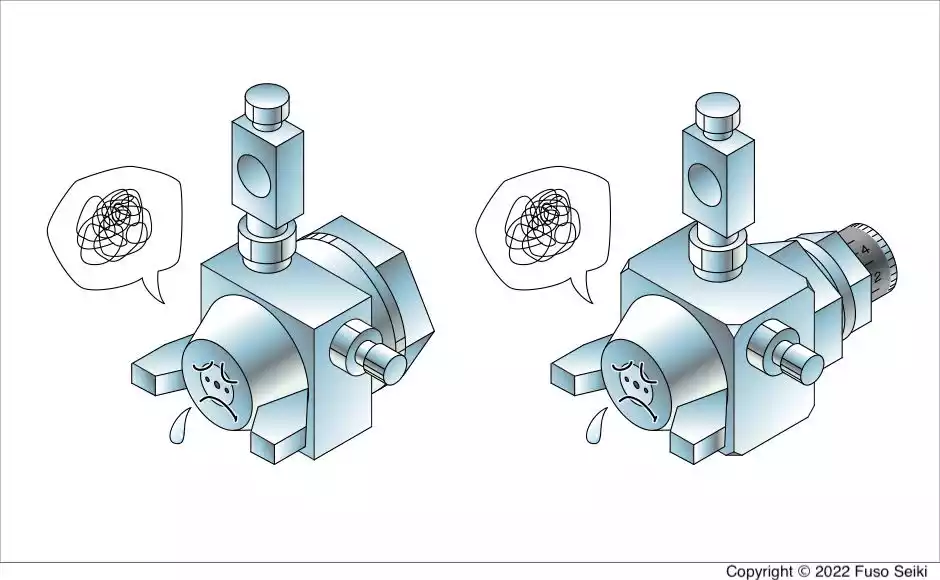Introduction
Spray cans are a staple in many households and industries, offering a convenient way to apply paint, lubricants, and other substances. Their ease of use and efficiency make them a popular choice for various tasks, from DIY projects to professional applications. However, like any tool, spray cans can encounter issues that hinder their performance. Understanding how to troubleshoot and solve these problems can save time, money, and frustration.
Spray cans operate on a simple yet effective principle: pressurized gas propels the contents out through a nozzle, creating a fine mist or spray. This mechanism, while straightforward, can encounter several problems that hinder performance. Common issues include clogged nozzles, weak spray patterns, and leaking cans. Each of these problems can stem from various causes, such as improper storage, lack of maintenance, or manufacturing defects.
Proper maintenance and troubleshooting are crucial for ensuring the longevity and effectiveness of spray cans. Regular cleaning, correct storage, and understanding the mechanics of the spray can are essential steps in preventing and addressing issues. This guide aims to provide a comprehensive overview of spray can troubleshooting and solutions, offering practical advice and detailed information to help users maintain their spray cans in optimal condition.
Understanding Spray Can Mechanics
How Spray Cans Work
Spray cans operate on the principle of pressurization. Inside the can, a propellant gas is stored under high pressure. When the nozzle is pressed, the propellant forces the liquid contents out through the nozzle, atomizing it into a fine mist. This process allows for even and controlled application of the contents.
Components of a Spray Can
• Can Body: The main container that holds the liquid and propellant.
• Valve: Controls the release of the contents when the nozzle is pressed.
• Dip Tube: Extends from the valve to the bottom of the can, allowing the liquid to be drawn up and expelled.
• Nozzle: The part through which the contents are sprayed. It often includes a spray tip that determines the spray pattern.
Common Spray Can Problems

Clogged Nozzles
Clogged nozzles are one of the most frequent issues with spray cans. They can occur due to dried paint or residue blocking the nozzle, preventing the contents from being sprayed effectively.
Weak Spray Patterns
A weak spray pattern can result from various factors, including low propellant pressure, a partially clogged nozzle, or a malfunctioning valve. This issue can lead to uneven application and wasted product.
Leaking Cans
Leaking cans are not only wasteful but also potentially hazardous. Leaks can occur due to damage to the can, a faulty valve, or improper storage conditions.
Preventative Measures
Proper Storage Techniques
• Store Upright: Always store spray cans upright to prevent leaks and ensure the propellant remains effective.
• Avoid Extreme Temperatures: Keep spray cans away from extreme heat or cold, as temperature fluctuations can affect the pressure and integrity of the can.
• Seal Nozzles: After use, wipe the nozzle clean and replace any caps to prevent clogs.
Regular Maintenance Tips
• Shake Well: Before each use, shake the can thoroughly to mix the contents and propellant.
• Test Spray: Perform a test spray on a scrap surface to ensure the nozzle is clear and the spray pattern is even.
• Clean Nozzles: Regularly clean the nozzle with a solvent or by soaking it in warm water to remove any residue.
Troubleshooting Clogged Nozzles

Identifying a Clogged Nozzle
• No Spray: If nothing comes out when you press the nozzle, it is likely clogged.
• Uneven Spray: A partially clogged nozzle may produce an uneven or sputtering spray.
Cleaning Techniques for Nozzles
• Warm Water Soak: Remove the nozzle and soak it in warm water to dissolve any residue.
• Solvent Cleaning: Use a solvent like acetone to clean the nozzle. Soak the nozzle in the solvent and then use a pin to clear any remaining blockage.
• Compressed Air: Blow compressed air through the nozzle to dislodge any debris.
Fixing Weak Spray Patterns
Causes of Weak Spray Patterns
• Low Propellant Pressure: Over time, the propellant can lose pressure, resulting in a weak spray.
• Partial Clogs: A partially clogged nozzle can restrict the flow of the contents.
• Valve Issues: A malfunctioning valve can affect the spray pattern.
Solutions to Improve Spray Performance
• Shake the Can: Ensure the contents are well-mixed by shaking the can thoroughly.
• Clean the Nozzle: Follow the cleaning techniques mentioned earlier to clear any clogs.
• Warm the Can: If the can is cold, warm it up by placing it in warm water (not hot) to increase the pressure.
Addressing Leaking Cans
Identifying Leaks
• Visible Damage: Check for any visible damage to the can, such as dents or punctures.
• Hissing Sound: A hissing sound indicates a leak, usually from the valve or a puncture.
Temporary and Permanent Fixes
• Temporary Fix: Use duct tape to seal small leaks temporarily.
• Permanent Fix: For a permanent solution, transfer the contents to a new can or seek professional repair services.
Choosing the Right Spray Can for Your Needs
Types of Spray Cans
• Aerosol Paint Cans: Ideal for painting projects, available in various colors and finishes.
• Lubricant Spray Cans: Used for lubricating mechanical parts, available in different formulations.
• Cleaning Spray Cans: Contain cleaning agents for various surfaces, including glass, metal, and plastic.
Selecting Based on Project Requirements
• Surface Type: Choose a spray can suitable for the surface you are working on.
• Finish: Consider the desired finish, such as matte, gloss, or satin.
• Special Features: Look for features like rust prevention, quick-drying, or high-temperature resistance.
Safety Precautions
Handling Spray Cans Safely
• Read Labels: Always read and follow the instructions on the can label.
• Ventilation: Use spray cans in well-ventilated areas to avoid inhaling fumes.
• Avoid Flames: Keep spray cans away from open flames and heat sources.
Protective Gear and Equipment
• Gloves: Wear gloves to protect your hands from chemicals.
• Masks: Use a mask to avoid inhaling fumes.
• Eye Protection: Wear safety goggles to protect your eyes from splashes.
Environmental Considerations
Eco-Friendly Spray Can Options
• Low-VOC Formulations: Choose spray cans with low volatile organic compounds (VOCs) to reduce environmental impact.
• Recyclable Cans: Opt for spray cans made from recyclable materials.
Proper Disposal of Spray Cans
• Empty Cans: Ensure the can is completely empty before disposal.
• Recycling: Check local recycling programs for spray can disposal.
• Hazardous Waste: Dispose of partially full cans at a hazardous waste facility.
Advanced Troubleshooting Techniques
Using Specialized Tools
• Nozzle Cleaning Kits: Use specialized kits designed for cleaning spray can nozzles.
• Pressure Gauges: Check the pressure inside the can with a pressure gauge.
When to Seek Professional Help
• Persistent Issues: If problems persist despite troubleshooting, consider seeking professional help.
• Damaged Cans: For damaged cans, professional repair services may be necessary.
DIY Solutions for Spray Can Issues
Homemade Cleaning Solutions
• Vinegar and Water: Mix vinegar and water to create a cleaning solution for nozzles.
• Baking Soda Paste: Use a paste of baking soda and water to clean stubborn residue.
DIY Repair Kits
• Nozzle Replacement Kits: Purchase kits that include replacement nozzles and other components.
• Sealant Kits: Use sealant kits to fix small leaks in spray cans.
Professional Repair Services
When to Consider Professional Services
• Complex Issues: For complex issues that DIY solutions can’t fix, professional services are recommended.
• High-Value Projects: For high-value projects, professional repair ensures the best results.
Finding Reliable Repair Services
• Research: Look for reputable repair services with positive reviews.
• Certifications: Check for certifications and qualifications of the repair service.
FAQs
1. How do I prevent my spray can nozzle from clogging?
Preventing nozzle clogs involves proper maintenance and storage. After each use, wipe the nozzle clean with a cloth to remove any residue. Store the can upright and replace the cap to protect the nozzle. Regularly clean the nozzle with warm water or a solvent to prevent buildup.
2. What should I do if my spray can is leaking?
If your spray can is leaking, first identify the source of the leak. For small leaks, use duct tape as a temporary fix. For larger leaks or damaged cans, transfer the contents to a new can or seek professional repair services. Always handle leaking cans with care to avoid exposure to harmful chemicals.
3. How can I improve the spray pattern of my spray can?
Improving the spray pattern involves ensuring the can is well-shaken before use, cleaning the nozzle regularly, and warming the can if it’s cold. If the spray pattern remains weak, check for partial clogs or valve issues and address them accordingly.
4. Are there eco-friendly spray can options available?
Yes, there are eco-friendly spray can options available. Look for spray cans with low VOC formulations and those made from recyclable materials. Proper disposal of empty cans and using environmentally friendly products can reduce the environmental impact.
5. When should I seek professional help for spray can issues?
Seek professional help for persistent issues that DIY solutions can’t fix, such as complex valve problems or significant damage to the can. For high-value projects, professional repair services ensure the best results and prevent further damage.
Conclusion
Spray cans are versatile tools that require proper maintenance and troubleshooting to function effectively. By understanding common issues, preventative measures, and advanced troubleshooting techniques, users can ensure their spray cans perform optimally. Whether addressing clogged nozzles, weak spray patterns, or leaking cans, this guide provides comprehensive solutions to keep your spray cans in top condition. Always prioritize safety and environmental considerations when using and disposing of spray cans.
Strategy Session 5: Transforming Colleges of Education
Ruth Aquilani is a renowned graffiti artist known for her bold, colorful, and expressive style. She began her career as a street artist in the early 2000s, quickly making a name for herself in the graffiti community with her unique and striking works of art.
